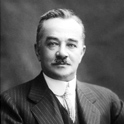Furthermore, one must say first, firmly and loudly, “gin français” (if the pocketbook is thin), or “gin anglais,” if the visiting American is picking up the chit. Then say “very little vermouth,” and finally, “with ice.” The latter is the most important part.
I myself have never cared much about ice. I like chilled things or even frozen things, but I feel that too much chilling or freezing often kills the flavors I want to taste. Some of my best friends, however, like, love, crave ice to the point of ruthless addiction. My Visiting American managed to ask for and get ice by what amounted to a desperate artistry.
There is probably a permanent frost burn across the face of Provence after our memorable ten-day pursuit of the dry Martini. I suspect that ice buckets still stand, half full of melted cubes rushed in from butcher shops of astonished neighbors, in a dozen little places like Le Relai Bleu in La Palette (population 214) and Aux Cigales in Luynes (population 382), where nobody had ever asked for ice before and quite possibly never will again. And although nothing has been said, I feel fairly sure that the amiable and discreet Visiting American still nurses an aftertaste of vermouth. And I, like Provence, may be faintly but forever scarred.
This enforced bit of research, sociological as well as alcoholic, made me wonder about the connotations of the words “dry Martini,” or, more precisely, of the word “cocktail” in what is loosely called The French Mind. And I decided that in spite of general familiarity with Yankee movies and whodunits and other efforts at foreign culture, to the French, cocktail means about what it did before World War I, or even before then—say, in the Edwardian heyday. In the midst of my semantic musings, I happened, by coincidence, to receive from Paris a fat book called The Drinker's Breviary, and, to my very real astonishment, I found that in spite of some of its oddly old-fashioned sounding contents it had been published only a few years ago and not in the nineteenth century.
The book states the usual good rules for drinking in this Western World: the reasons for drinking red wines and white wines as we do, the care of wines, and their general significance in our culture. It also includes ways to transfigure or pollute these viny miracles, according to one's proclivities. There are, for instance, some appalling punch recipes, most of them dating from long before Edward and many of them long unused. Some, though, are still being concocted—and even drunk—at hunt breakfasts in Lanarkshire and rectors' teas in Brookline.
The introduction in the Breviary to the subject “Les Cocktails” starts out, “There is no firm rule about the preparation of cocktails, and as a matter of fact fantasy and imagination are often the only guides. However, in order to compose a drink maintaining a modicum of flavor, it is almost always essential to remember the rule that there should be, in spite of everything and above all, a mixture of one or two strong liquors and one or two syrups.”
Having briefed the gay dog of a cocktail mixer thus firmly (“in spite of everything and above all”), the Breviary adds in a terse sentence before its list of recipes, “Thus, for beginners, we present a few formulae which are, in a manner of speaking, classic.”
To make a Scotch Cocktail, the Breviary instructs, use Scotch, sugar syrup, orange juice, lemon juice and (heaven help us!) raspberry syrup. Martini Flip calls for a lethal-sounding combination of Scotch, vermouth, eggs, powdered sugar and a pinch of nutmeg. The Vermouth Cocktail, I think, must have been intended to do in unwelcome droppers-in at cocktail time. It is a mixture of Scotch, sweet red vermouth, powdered sugar, orange juice, lemon juice and grapefruit juice. There are also recipes for drinks called Normandy Cocktail and Cocktail Brandy. If the word “cocktail” comes first, the drink is old-fashioned. For instance, the Normandy Cocktail dates from after World War II, whereas Grandpa may have imbibed a Cocktail Brandy in London in 1911.
Probably my favorite in the French Breviary is the recipe for a cocktail called Le Pink, pronounced pangk or peenk, depending on one's social and educational level in Aix. The recipe for this drink reminded me that when I was young my father made something for parties that was fuzzy, potent, and of course pink, from applejack, eggs and grenadine. It could not possibly have been as heavenly as I remember it—nor as awful as it sounds now. Le Pink is composed of sweet vermouth, currant juice, cherry brandy, and the ubiquitous raspberry syrup, apparently as necessary to the old-time bar as it is to the American drugstore today. These disparate ingredients were put into a shaker, and then some (“some” seems the best way to translate “une certaine quantite”) shaved ice was added, the drink shaken and then served over a currant and a raspberry.
How pretty it must have looked! But I wonder what the Visiting American would have thought of it—aside from the essential “certain quantity“ of ice, of course!


 Pinterest
Pinterest






